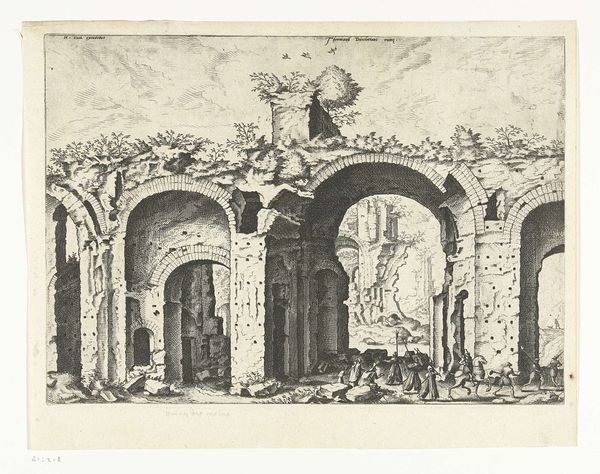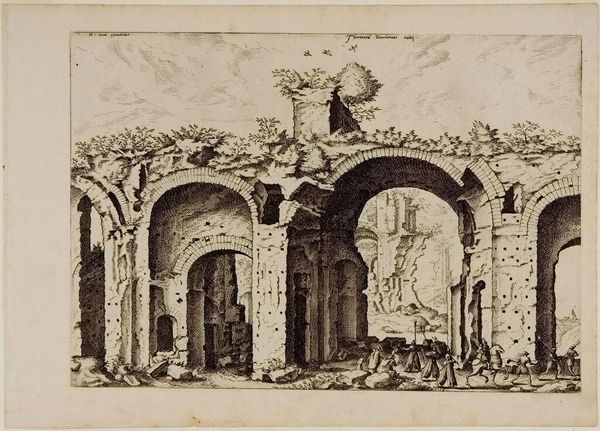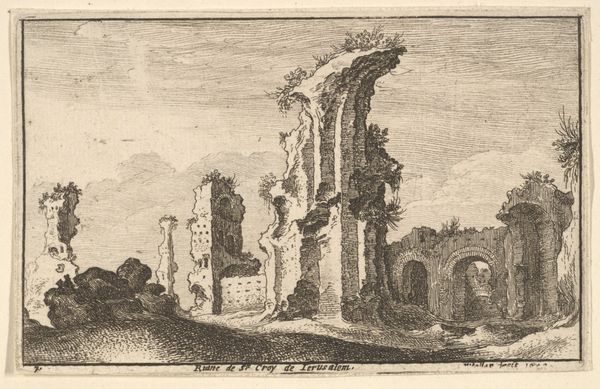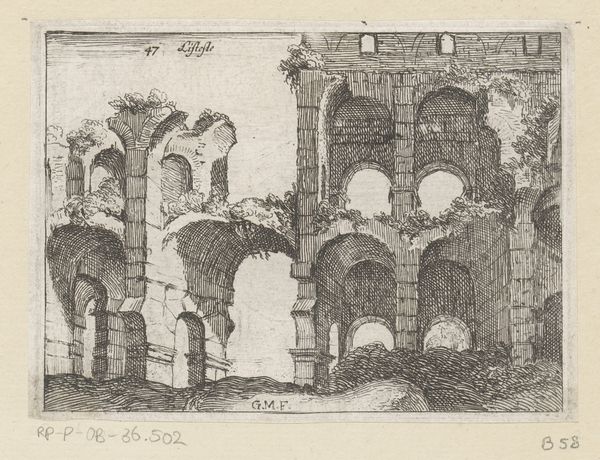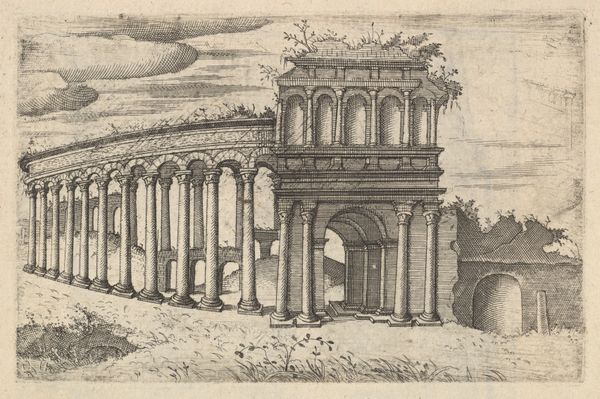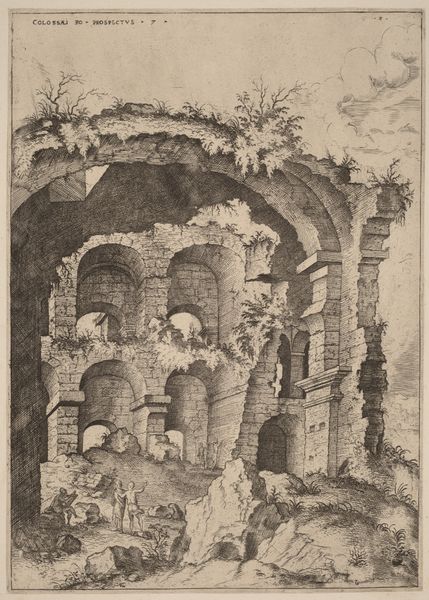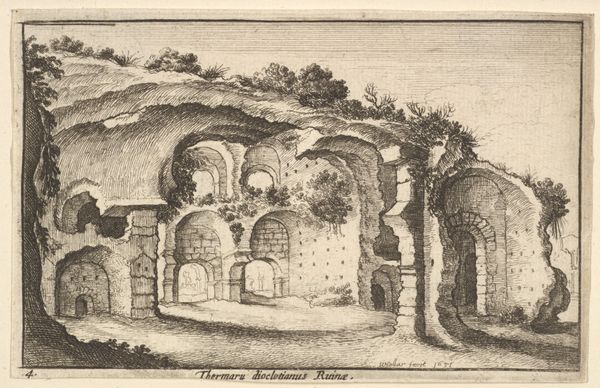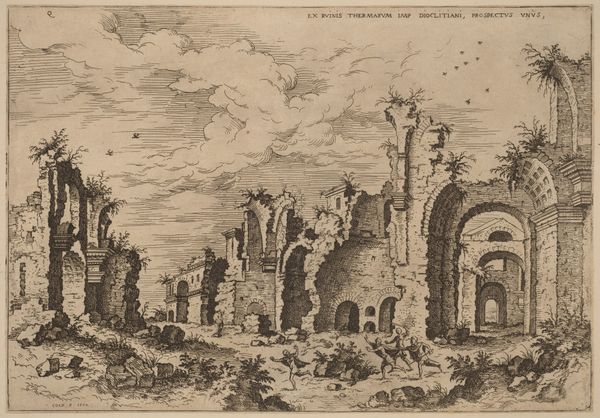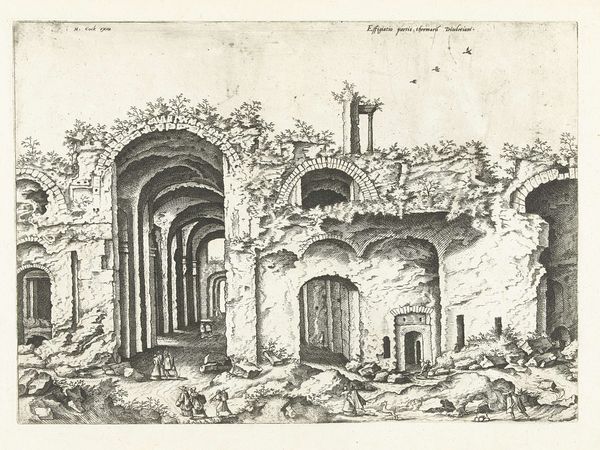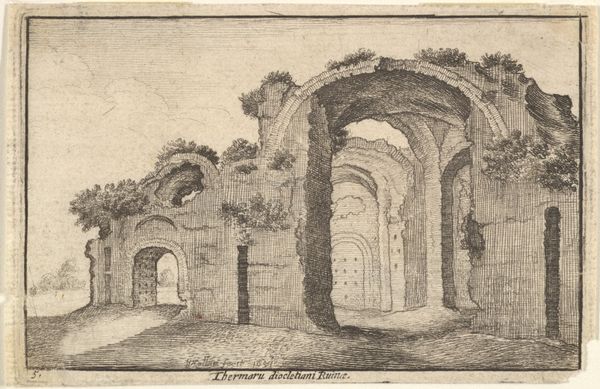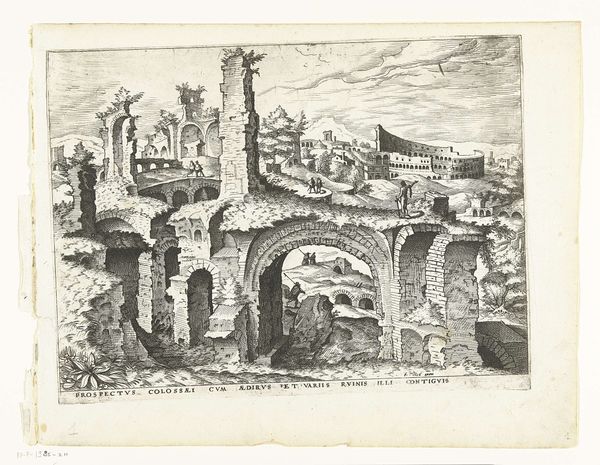
The Baths of Diocletian, from the series Roman Ruins and Buildings 1562
0:00
0:00
drawing, print, etching, architecture
#
drawing
# print
#
etching
#
landscape
#
romanesque
#
ancient-mediterranean
#
architecture
Dimensions: sheet: 7 1/16 x 10 3/16 in. (18 x 25.8 cm)
Copyright: Public Domain
Editor: This is Johannes van Doetecum I's etching, "The Baths of Diocletian, from the series Roman Ruins and Buildings," created in 1562. Looking at it, I'm struck by this overwhelming sense of time and decay, but also resilience, how nature reclaims these grand structures. What stands out to you? Curator: It's fascinating how ruins function as symbols, isn’t it? The Baths, once a place of communal cleansing and social gathering, are here reduced to fragmented memories. Consider the arch, for instance. It signifies triumph, passage, connection, yet these arches are broken, incomplete. What does that incompleteness suggest to you? Editor: Perhaps the loss of the Roman Empire and their achievements? The passage to somewhere unreachable. Curator: Precisely! The architecture is not just stone and mortar. See how the artist emphasizes the creeping vegetation, blurring the lines between human creation and natural forces? That suggests a deliberate commentary on the transience of power. This connects to the memento mori tradition, where objects remind us of our mortality. Editor: So, the image carries layers of meaning, not just depicting a place, but also using the ruins as symbolic representations of history and mortality? I never thought of ruins that way! Curator: Absolutely. Visual symbols embed cultural memory and trigger associations across generations. How do you think contemporary audiences would interpret this image differently? Editor: Maybe we’d focus more on preservation or the environment, seeing these ruins as evidence of climate change over centuries? This conversation has changed how I view ruins, seeing the embedded historical, psychological and cultural references. Curator: It is enriching to consider how symbols gain and lose meaning and impact how we perceive ourselves within this larger narrative.
Comments
No comments
Be the first to comment and join the conversation on the ultimate creative platform.
